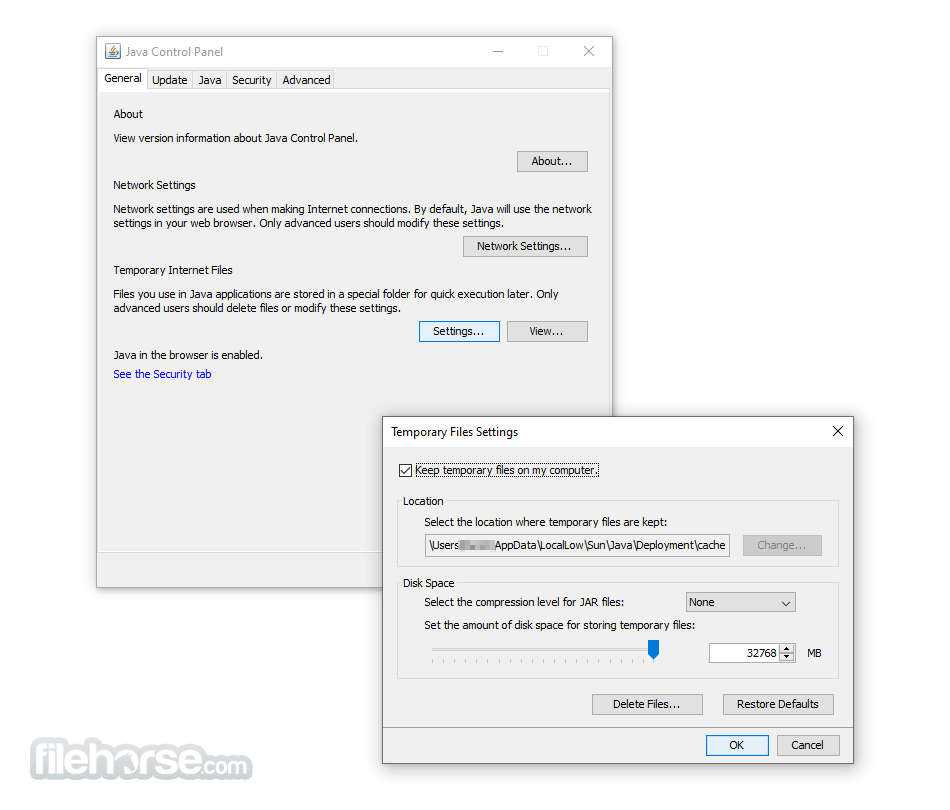Java 32 Bit For Mac

This topic includes the following sections:
The IBM ® SDK, Java. Downloads are available for the Windows operating system on Intel 32-bit and 64-bit architectures. Java Platform Standard Edition (Java SE) Downloads of IBM Developer Kits and Runtime Environments are available for all releases on the following platforms: AIX. If you have a JRE installed that is not detected, you should be able to add it through this same menu. And, you can install a JRE or configure OpenOffice to use Java at any time to get missing functionality to work. Important note for Windows users: The Windows version of OpenOffice is 32-bit and therefore it requires a 32-bit JRE. How to find 32-bit apps on the Mac. To see a list of a Mac's existing 32-bit applications, users should click 'About This Mac' from the Apple menu, then click the button marked 'System Report.'
Mac drive on windows 10. MacDrive also includes powerful features that enable you to create and partition Mac disks direct from your PC. And in the event that your Mac disks is having a problem, our robust repair feature can fix basic disk issues. From floppies to hard drives, MacDrive can handle almost any disk you toss at it. Why should you consider formatting your hard drive? You might already know the consequences of. Here is short video on how you can read or access the Hard Drive that was formatted for mac, using a windows. Software Used: HFSExplorer Software Link http. Transferring Data From a Mac to PC via an External Hard Drive. Mac OS X and Windows can both read and write to disks in the FAT or ExFat format. Because Mac OS X Mountain Lion does not natively support writing to an external NTFS drive, you must erase your hard disk and format it.
System Requirements for Installing the JDK on macOS

We don't have any change log information yet for version 8-build-251 of Java Runtime Environment 32-bit. Sometimes publishers take a little while to make this information available, so please check back in a few days to see if it has been updated.
The following are the system requirements for installing the JDK on macOS:
Any Intel-based computer running macOS.
Administrator privileges.
You cannot install Java for a single user. Installing the JDK on macOS is performed on a systemwide basis for all users. Administrator privileges are required to install the JDK on macOS.
Determining the Default JDK Version on macOS
When starting a Java application through the command line, the system uses the default JDK.
You can determine which version of the JDK is the default by entering java -version in a Terminal window. If the installed version is 13 Interim 0, Update 0, and Patch 0, then you see a string that includes the text 13. For example:
To run a different version of Java, either specify the full path, or use the java_home tool. For example:
$ /usr/libexec/java_home -v 13 --exec javac -version
Installing the JDK on macOS
- Download the JDK
.dmgfile,jdk-13.interim.update.patch_osx-x64_bin.dmg.Before the file can be downloaded, you must accept the license agreement. Key wondershare data recovery for mac.
- From either the browser Downloads window or from the file browser, double-click the
.dmgfile to start it.A Finder window appears that contains an icon of an open box and the name of the.pkgfile. - Double-click the
JDK 13.pkgicon to start the installation application.The installation application displays the Introduction window. - Click Continue.
- Click Install. A window appears that displays the message: Installer is trying to install new software. Enter your password to allow this.
- Enter the Administrator user name and password and click Install Software.The software is installed and a confirmation window is displayed.
.dmg file if you want to save disk space. Uninstalling the JDK on macOS
You must have Administrator privileges.Note:
Do not attempt to uninstall Java by removing the Java tools from /usr/bin. This directory is part of the system software and any changes will be reset by Apple the next time that you perform an update of the OS.
- Go to
/Library/Java/JavaVirtualMachines. - Remove the directory whose name matches the following format by executing the
rmcommand as a root user or by using thesudotool:/Library/Java/JavaVirtualMachines/jdk-13.interim.update.patch.jdkFor example, to uninstall 13 Interim 0 Update 0 Patch 0:
$ rm -rf jdk-13.jdk
Installation FAQ on macOS Platform
This topic provides answers for the following frequently asked questions about installing JDK on macOS computers.
1. How do I find out which version of Java is the system default?
When you run a Java application from the command line, it uses the default JDK. If you do not develop Java applications, then you do not need to worry about this. See Determining the Default JDK Version on macOS.
2. How do I uninstall Java?
See Uninstalling the JDK on macOS.

Java 32 Bit Mac Os X Download

3. After installing Java for macOS 2012-006, can I continue to use Apple's Java 6 alongside the macOS JDK for Java 13?
If you want to continue to develop with Java 6 using command-line, then you can modify the startup script for your favorite command environment. For bash, use this:
$ export JAVA_HOME=`/usr/libexec/java_home -v 13`
Some applications use /usr/bin/java to call Java. After installing Java for macOS 2012-006, /usr/bin/java will find the newest JDK installed, and will use that for all of the Java-related command-line tools in /usr/bin. You may need to modify those applications to find Java 6, or contact the developer for a newer version of the application.
Steam 32 Bit Mac
Real-Time Strategy Games. 4. What happened to the Java Preferences app in Application Utilities?
Mac Os X Java 32 Bit

Office For Mac 32 Bit
The Java Preferences app was part of the Apple Java installation and is not used by Oracle Java. Therefore, macOS releases from Apple that do not include Apple Java will not include Java Preferences.
